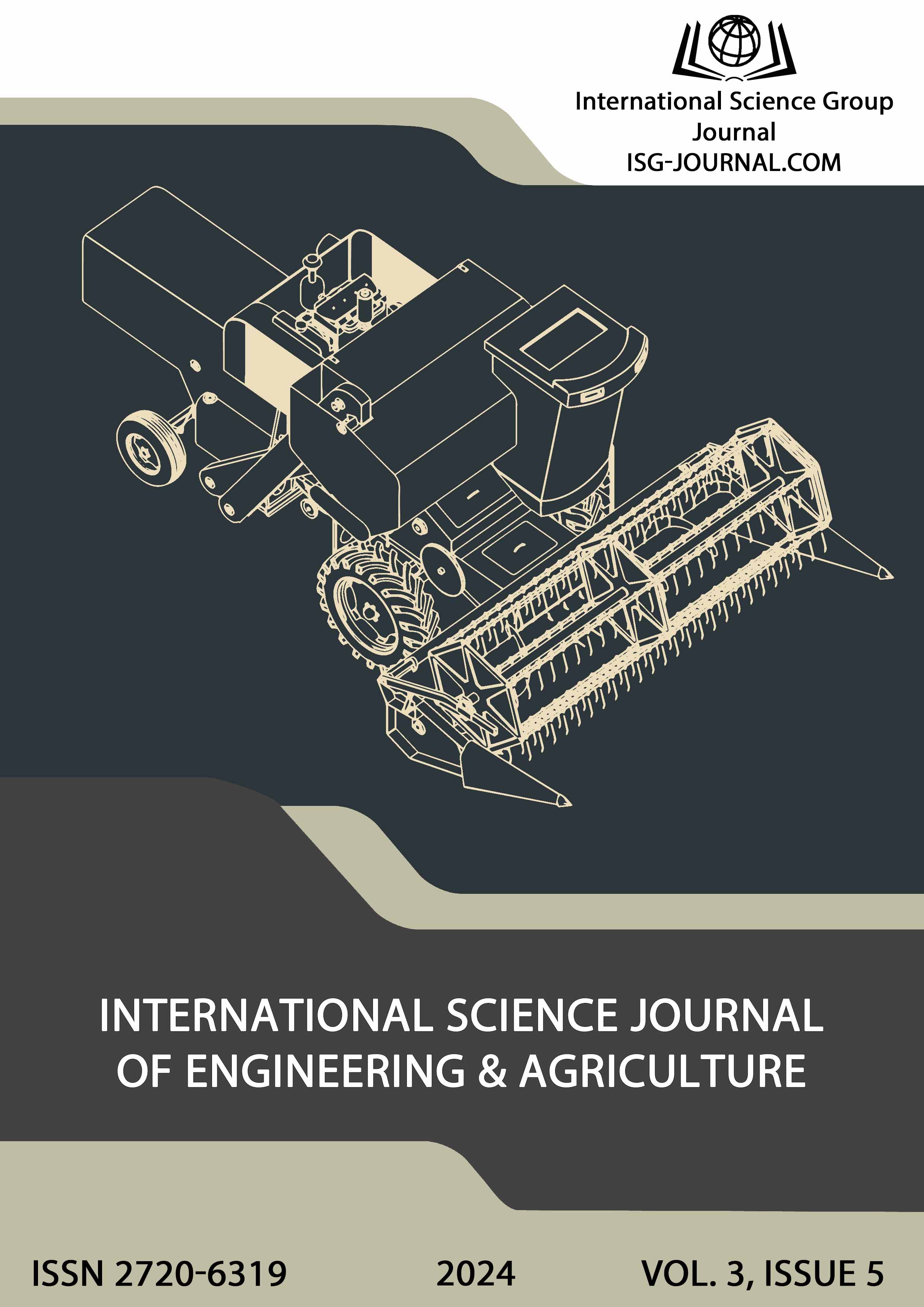The method of visual assessment of the impact of industrial enterprises on herbaceous plants
DOI:
https://doi.org/10.46299/j.isjea.20240305.07Keywords:
industrial site, influence of industrial enterprise, herbaceous plants, model plants, method of analysis of hierarchies, absolute assessment, relative assessmentAbstract
Methods of visual biological monitoring in combination with methods of mathematical data processing give the greatest effect if they are applied at the first stages of observations, which allows to optimize labor costs and the amount of information obtained during field observations. The error of visual assessment depends significantly on the expert's qualifications, therefore research devoted to the development of a methodology that allows reducing the subjectivity of the expert's decisions is relevant. The basis of the proposed methodology is the method of analysis of hierarchies, which allows for a pairwise comparison of herbaceous plants, which, unlike an absolute comparison, is less dependent on the expert's qualifications. A step-by-step procedure for building a rank model of the degree of influence of an industrial enterprise on herbaceous plants is proposed, which allows justifying the choice of model plants for further monitoring. Typical criteria for assessing the levels of the state of herbaceous plants are considered and a hierarchical model is provided for determining the weighting coefficients of three criteria: plant height; occupied area, number of plants. The model has 3 levels and a cluster structure: the goal cluster; cluster of criteria; cluster of alternatives. The cluster of alternatives contains 5 model plants. To select model plants from the total set of plants on the monitoring area, a procedure is proposed that allows the initial set to be divided into levels, each of which contains a subset that characterizes the degree of current influence of the industrial enterprise.The results of the calculation of local priorities of the condition of model plants with respect to each of the three criteria, as well as the corresponding global priorities, are given. Consider the formulas and examples of their use for the absolute and relative assessment of the degree of influence of the industrial enterprise both on individual model herbivores of the plant and on the entire surveyed territory.References
Sonter, Laura J.; Dade, Marie C.; Watson, James E. M.; Valenta, Rick K. (2020). Renewable energy production will exacerbate mining threats to biodiversity. Nature Communications (англ.). 11 (1): 4174. Bibcode:2020 NatCo..11.4174S. doi:10.1038/s41467-020-17928-5. ISSN 2041-1723. PMC 7463236. PMID 32873789.
Wolski, K., Markowska, J., Radkowski, A. et al. (2021) The influence of the grass mixture composition on the quality and suitability for football pitches. Sci Rep 11, 20592. doi://doi.org/10.1038/s41598-021-99859-9
Bocianowski J, Kozak M, Liersch A, Bartkowiak-Broda I.(2011) A heuristic method of searching for interesting markers in terms of quantitative traits. Euphytica. ;181:89–100. doi: 10.1007/s10681-011-0424-z.
Kosrea B, Sarezeanu V., Horblaga M. (2012) Evolution of lawn grass quality indicators from queen Maria park from Timisoara, Romania. Research Journal of Agricultural Science, 44 (4). doi: https://www. cabidigitallibrary. org/doi/pdf/10.5555/20133395329
Kevin N. Morris, (2022) A Guide to NTEP Turfgrass Ratings. doi: https://www.google.com/search?q=NTEP%20turfgrass%20evaluation%20guidelines.
Alexandra D., Korakaki. E, Evangelia V., Boutsios.S, Oikonomidis. S, Daskalakou.E (2023). Assessment of Herbaceous Plant Composition, Diversity, and Indicator Species in the Juniperus drupacea Forest Openings of the Mountain Parnonas in Greece. doi: https://www.mdpi.com/2071-1050/15/18/13765/
Lykholat Y., Khromykh N., Ivan’ko I., Matyukha V., Kravets S., Didur O., Alexey A., Shupranova V. (2017) Assessment and prediction of the invasiveness of some alien plants in conditions of climate change in the steppe Dnieper region. Biosyst. Divers., 25(1), 52–59. doi: https://ecology.dp.ua/index.php/ECO/article/view/011708/691
Saaty, T., (2008). Prinjatie reshenij pri zavisimostjah i obratnyh svjazjah: Analiticheskie seti.
Saaty, T. (1993). Decision Making: Hierarchy Analysis Method, avaible at: http://pqm-online.com/assets/files/lib/books/ saaty.pdf.
Saaty, Th., Super Decisions CDF, avaible at: https://www.superdecisions.com/models.
Franks, DM, Boger, DV, Cote, CM, Mulligan (2011). Принципи сталого розвитку щодо утилізації відходів гірничої промисловості та переробки корисних копалин. Sustainable Development Principles for the Disposal of Mining and Mineral Processing Wastes. Resources Policy. 36 (2): 114—122. doi:10.1016/j.resourpol.2010.12.001.
Mummey, Daniel L.; Stahl, Peter D.; Buyer, Jeffrey S. (2002). Мікробіологічні властивості ґрунту через 20 років після рекультивації шахт: просторовий аналіз рекультивованих і непорушених ділянок. Soil microbiological properties 20 years after surface mine reclamation: spatial analysis of reclaimed and undisturbed sites. Soil Biology and Biochemistry. 34 (11): 1717—1725. doi:10.1016/s0038-0717(02)00158-x.
Браткевич В. В. (2016). Оценка качества систем поддержки E-learning, Системи обробки інформації. Проблеми і перспективи розвитку IT-індустрії. Випуск 4(141). Харків-2016, с. 219-222.
Зелена книга України / Під загальн. ред. Я.П. Дідуха. Киев: Альтерпрес, 2009. 448 с.
Зак Ю.А. (2013) Принятие решений в условиях нечетких и размытых данных: Fuzzy-технологии. — М.: «ЛИБРОКОМ»,— 352 с. — ISBN.
Downloads
Published
How to Cite
Issue
Section
License
Copyright (c) 2024 Olena Dmytrieva, Natalya Tsapko, Iryna Drulyova, Iryna Koldoba, Vyacheslav Bratkevich

This work is licensed under a Creative Commons Attribution 4.0 International License.






